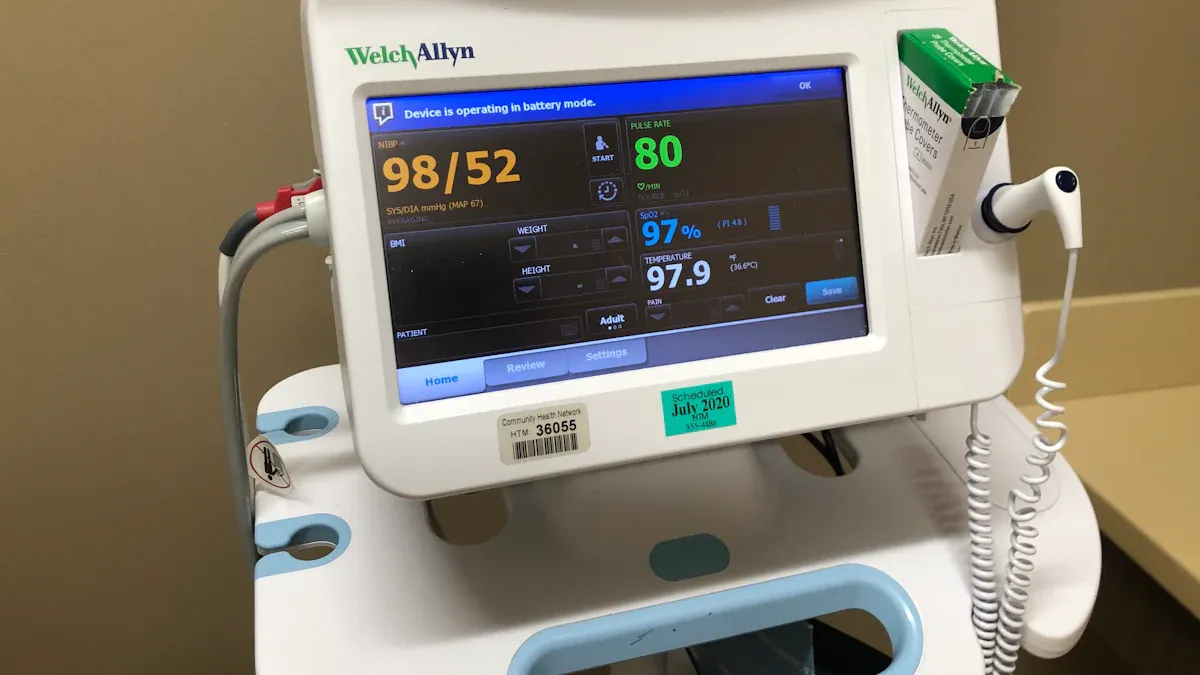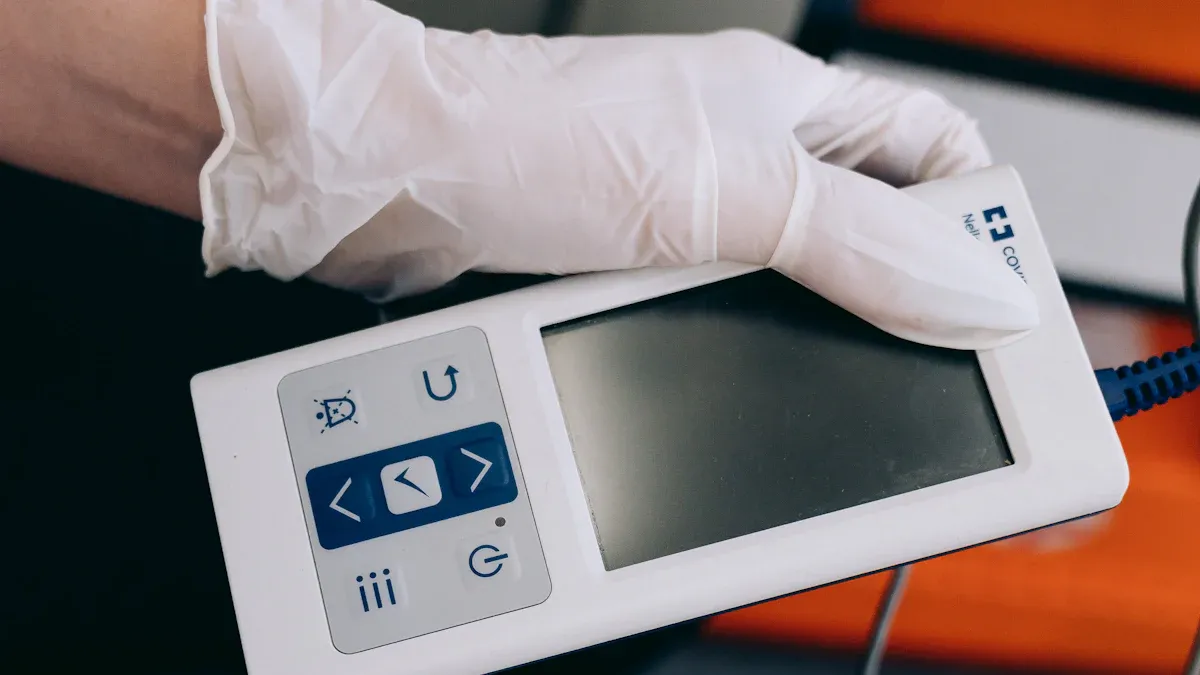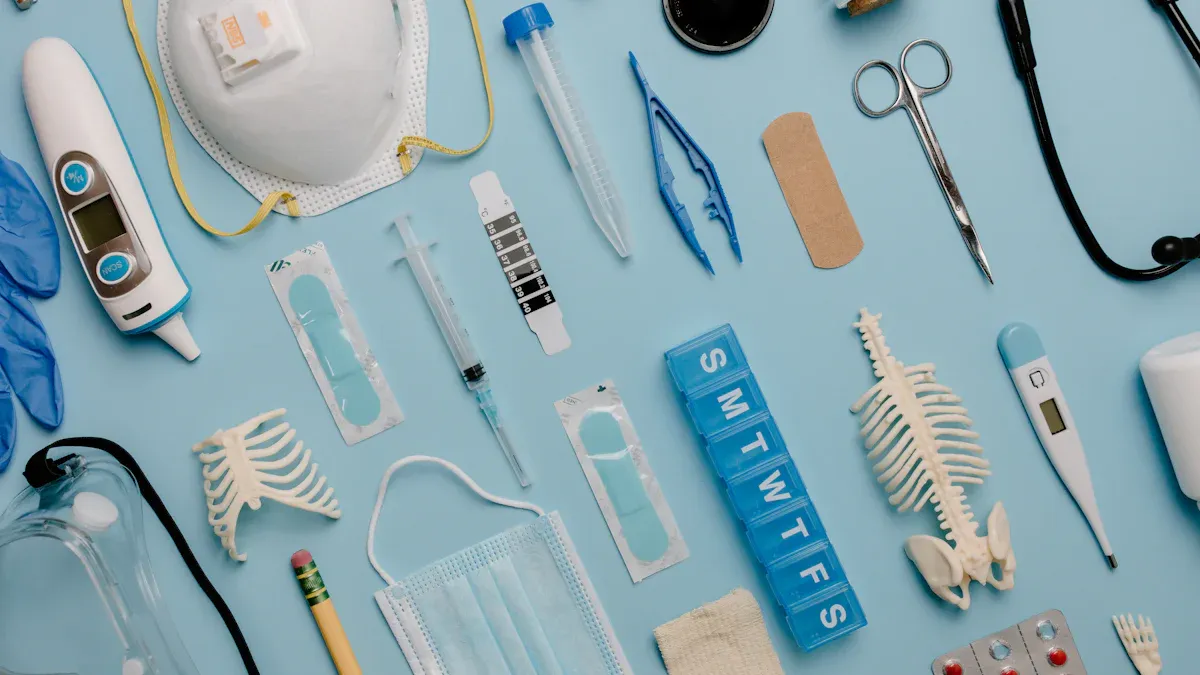Discover Why NiTi Tubes Dominate Medical Manufacturing

NiTi tubes have changed how medical devices are made. They are flexible, strong, and safe for the body. These tubes can return to their shape after bending. This makes them perfect for important medical tools. They are used in devices that need to be precise and reliable. Their softness is like real bones, which helps implants work better. NiTi tubes resist rust, so they last in the body. The market for these tubes is growing fast. It went from $1.23 billion in 2022 to a guessed $2.10 billion by 2030. This growth is because they are great for blood vessel treatments and other medical uses.
Key Takeaways
NiTi tubes are bendable and tough, perfect for medical tools.
These tubes do not rust, keeping them safe and lasting long.
NiTi tubes go back to their shape after bending, helping tools like stents work well.
Using NiTi tubes in devices helps patients heal better and need fewer fixes.
More people want NiTi tubes now, showing they are key in making medical tools today.
Unique Material Properties of NiTi Tubes

Biocompatibility and Safety
Safety is very important for medical devices. NiTi tubes are great because they work well with the body. They lower the chance of bad reactions. Tests like the MTT assay check how safe they are. This test looks at how cells react to the material, proving it is safe.
NiTi tubes also resist rust, which is important for long-term use. Rust can release harmful metals that may hurt the body. NiTi’s strong resistance to rust keeps it safe and reliable. Blood tests show these tubes work well with blood, making them good for medical procedures.
Shape Memory and Superelasticity
NiTi tubes are special because they can return to their shape. Even after bending, they go back to how they were. This is helpful for medical tools that need to bend but stay strong. For example, they can move through tricky paths in surgeries without breaking.
The nickel-titanium mix in NiTi tubes helps them keep their shape. This makes them perfect for stents and catheters, which need to be both strong and flexible. Compared to steel, NiTi is better at bending and handling vibrations, making it more useful.
Property | NiTi (NITINOL) | Steel |
|---|---|---|
Elastic Modulus | Higher | Lower |
Shear Modulus | Higher | Lower |
Superelasticity | Yes | No |
Vibration Damping | Yes | Limited |
Corrosion Resistance
NiTi tubes are also great at resisting rust. Tests in special solutions check how well they handle tough conditions. Rules like ASTM F21296 and ASTM G5-14 make sure these tests are done right.
NiTi tubes last a long time because they don’t rust easily. Other materials might break down, but NiTi stays strong. This makes them perfect for implants that need to last. Research is still improving how well NiTi resists rust, making it even better for medical use.
Fatigue and Kink Resistance
NiTi tubes are great for medical tools because they resist wear and bending. This means they can handle repeated use without breaking. These features are crucial for implants and tools that move or bend a lot inside the body.
Fatigue resistance means a material can handle repeated stress without failing. NiTi tubes are better than many other materials at this. For instance, stents made from NiTi can handle over 3.7 × 10^8 cycles in 10 years. This makes them very dependable for long-term medical use.
Kink resistance is also important for NiTi tubes. Kinking can block fluids or harm tissues. NiTi’s flexibility stops kinking, even when bent a lot. This makes it perfect for catheters and tools used in tight spaces in the body.
Studies show NiTi alloys are great at resisting fatigue. Problems often happen at weak spots, but NiTi’s design reduces these risks. The table below shows findings from recent research:
Study Title | Key Findings |
|---|---|
Numerical Investigation on the Effect of Inclusions on the Local Fatigue Strain in Superelastic NiTi Alloy | Fatigue issues were linked to stress at weak spots in Nitinol. |
On the Importance of Structural and Functional Fatigue in Shape Memory Technology | Stents must handle over 3.7 × 10^8 cycles in 10 years. |
Using NiTi tubes means your medical tools will last longer and work better. These features make them safer and more reliable for saving lives.
Applications of Nitinol Tubes in Medical Device Manufacturing

Use in Minimally Invasive Devices
Nitinol tubes are key for less invasive surgeries. They are flexible and strong, helping tools move through the body easily. These tubes are safe to use inside the body because they are bio-friendly. They can return to their original shape after bending, which is important for tools like catheters. This feature lowers the chance of damage during use or insertion.
The need for nitinol materials has grown a lot in 10 years. This shows how important they are in making medical tools. In 2023, vascular tools like stents and catheters made up 40% of sales. These tools depend on nitinol’s ability to bend and resist rust in tough conditions.
Role in Stents and Catheters
Nitinol tubes are crucial for making stents and catheters. Stents made from nitinol can shrink for easy placement and expand where needed. This helps support blood vessels without causing harm. Nitinol’s ability to stay strong under pressure keeps these stents working well.
Studies show nitinol’s long-lasting strength is vital for stents. Stents must handle millions of movements over many years. Nitinol’s toughness and rust resistance make it perfect for these tools. Catheters also benefit from nitinol’s bendability, letting them move through tight areas without breaking.
Other Specialized Applications
Nitinol tubes are also used in advanced medical tools. New ways of making them reduce waste and speed up production. This makes it easier to create implants like bone grafts and plates. Nitinol’s special traits, like flexibility and safety, allow for creative designs that help bones heal and cells grow.
Nitinol scaffolds are designed to prevent bone loss by adjusting stiffness. This keeps bones healthy and strong. Self-expanding nitinol stents have been tested successfully for heart treatments. These breakthroughs show how nitinol is unmatched in medical uses.
Why NiTi Tubes Are Better Than Other Materials
Why They Beat Stainless Steel
NiTi tubes are better than stainless steel for medical tools. They can bend and return to their shape easily. This is important for tools like stents and catheters. These tools need to move and flex without breaking. NiTi tubes are also lighter, making them easier to use in delicate surgeries.
They are stronger and can handle more pressure without snapping. NiTi tubes are almost twice as flexible as stainless steel. They also stay stable in different temperatures because they expand less. These features make NiTi tubes a top choice for medical devices.
Main Benefits:
Can bend and return to shape.
Lightweight for easier handling.
Strong and durable under pressure.
More flexible than stainless steel.
Works well in different temperatures.
Why They’re Better Than Polymers
NiTi tubes last longer and work better than polymers. They don’t lose their shape even after being bent many times. This makes them great for implants and tools that need to last. NiTi tubes also resist rust, unlike many polymers.
NiTi implants can adjust stiffness to protect bones from damage. New ways of making NiTi reduce waste and allow custom designs. For example, NiTi scaffolds help bones grow and heal faster. These features show why NiTi is better than polymers for medical tools.
Main Benefits:
Strong and reliable under stress.
Resists rust for long-term use.
Can be customized for each patient.
Helps bones and cells grow better.
Why NiTi Tubes Are the Best Choice
High-quality NiTi tubes are the best for medical tools. Tests like ASTM F21296 check their rust resistance for long-term safety. Biocompatibility tests ensure they are safe for the body. This lowers the risk of harmful metal reactions.
NiTi tubes are also safe to use with blood. Tests confirm they don’t cause blood clots, making them great for stents and catheters. These strict tests prove NiTi tubes are reliable and safe for medical use.
Test Type | What It Proves |
|---|---|
Rust Resistance | ASTM F21296 ensures they don’t rust over time. |
Biocompatibility | Tests show they are safe for implants. |
Blood Safety | Confirms they work well with blood for medical tools. |
The demand for NiTi tubes is growing fast, with a 6.5% yearly increase expected by 2030. Their mix of flexibility, strength, and safety makes them essential for medical manufacturing.
Nitinol tubes are very important in making medical tools. They have special features like shape memory and superelasticity. These make them safe and reliable for important uses. Nitinol tubes can handle pressure, avoid rust, and last a long time. They work well in stents, catheters, and small surgery tools. When compared to other materials, nitinol is the best option. These tubes are more than just parts; they are key to modern medical progress. Using nitinol tubes means safer tools and better results for patients.
🩺 Tip: Nitinol tubes lead the way in medical device progress. Their top performance makes them a must-have.
FAQ
What makes NiTi tubes special for medical tools?
NiTi tubes are unique because they can bend and bounce back. This is due to their shape memory and superelasticity. They also don’t rust or wear out easily, making them great for long-term use in the body.
Are NiTi tubes safe for implants?
Yes, NiTi tubes are safe and work well in the body. They go through strict tests to ensure no harmful reactions happen. Their rust resistance and blood compatibility make them perfect for stents and catheters.
🩺 Note: Always talk to your doctor about implant materials.
How are NiTi tubes better than stainless steel?
NiTi tubes are stronger and more flexible than stainless steel. They can bend many times without breaking. Unlike steel, NiTi can return to its original shape, which is important for tools like stents.
Can NiTi tubes be made for specific uses?
Yes, NiTi tubes can be designed for different medical needs. Their size, shape, and stiffness can be adjusted. This makes them useful for many types of medical devices.
Why are NiTi tubes better than polymers?
NiTi tubes last longer and stay strong under pressure. They don’t rust or lose their shape after repeated use. Polymers can break down over time, but NiTi stays reliable for implants and surgery tools.
💡 Tip: NiTi’s strength means fewer replacements, saving time and money.

